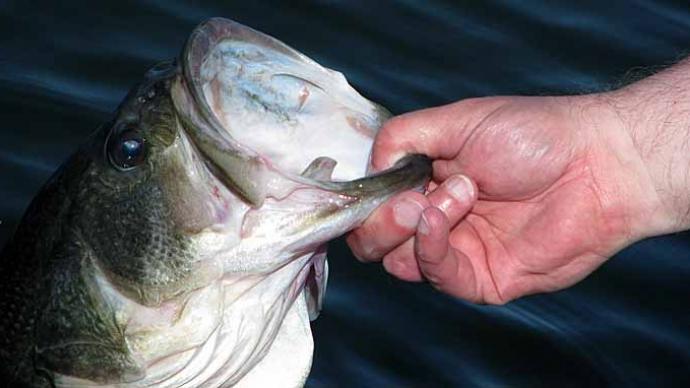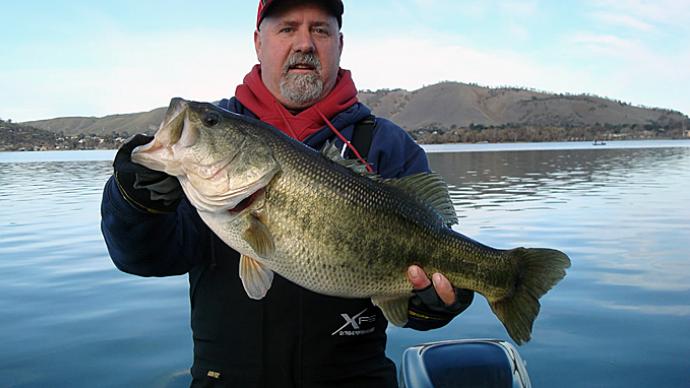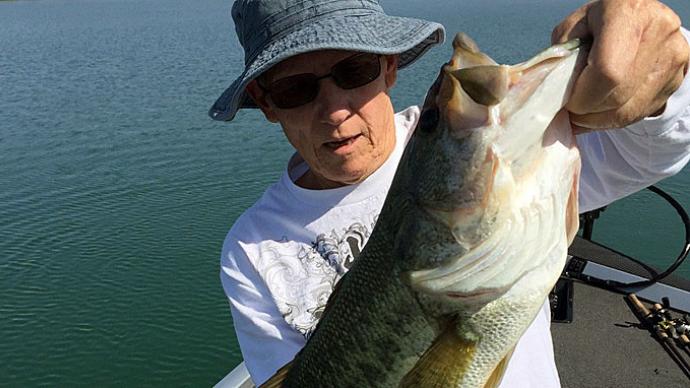
One of the best trophy bass fishermen I've known always said he caught more little fish than most. Walter Freels took pride in his ability to catch bass so small he said they could best be described as cute. This is from a guy with an excellent reputation for catching trophy bass.
These cute bass were the ones he bragged about. He said it was much easier to catch bass weighing eight, nine, or 10 pounds than to catch those little bass weighing one a part of a pound.
"Anybody can catch those big ol' fish," he would say. "They've got those big ol' mouths, and anybody can cast a lure right into them. But casting a bait into those little bass' mouths takes real skill."
He said he was more skilled than most at doing it. But, although he prided himself on being able to catch cute bass, he was known for catching the big ones. And, despite his reasoning, great big fish are much harder to catch.
Texas has always had many fishermen known for putting a dip net under monster-sized bass. Tom Butler is one of them. Before the introduction of Florida bass into Texas waters and before catch and release, Butler caught at least one eight-pound bass for 15 straight years.
When Lake Murvaul was at its best, Tom caught a pickup load of trophy fish. During one two-year stretch, he caught 50 bass that weighed eight pounds or better.
So, what was his secret? Did he fish strictly for big fish? I remember asking him that question. His answer was quick in coming. "I fish for fish," Tom said, "don't you?"
Tom had some incredible catches back then. In a one-day trip to Murvaul, he put together a catch of 10 bass totaling 83 pounds. The smallest weighed 6.10, and the largest 9.1.
For those who have been around a while, not many conversations of trophy bass fishermen will end before someone mentions Buddy Bradley. The Dallas angler got a taste of fishing the lead-head jig with a pork rind attached to it on a visit to Bull Shoals Lake in Arkansas in 1956. When he returned home, he fished this lure in the clear depths of Possum Kingdom and several other takes. Then, he put it to work on Lake Leon the following spring. He soon became one of the most respected big fish anglers Texas has ever known and still is.
Buddy and his fishing partner Allan Scales became legends in their time. The first time I saw them was on Murvaul. I was fishing with Cliff Holloway. We saw them catch a seven-pounder. Cliff watched them and said, "I don't know who they are, but those guys are fishermen!"
We eased our boat close enough to introduce ourselves, and that's when they showed us the pork baits they had attached to weedless jigs. Buddy had been making those jigs for ten years for his use. The pork rind was named the Hawgus.
Buddy would cast the bait to the desired spot, any cover in from two to forty feet of water, depending on the lake's clarity, time of year, and time of day. Then, he let the jig drop to the bottom and sit for about 10 seconds. He said this lets the bass hear the lure hit bottom and examine the minute movement of the water action on the pork strip, which follows after the lure hits bottom.
He and Allan had made a science of jig and eel fishing. One had gone below the water surface and laid close to a given point, while the other would cast a lure to the point. He said, "We can hear the lure strike bottom, and fish can hear this considerably better in its own element."
He would then move the lure from three to six inches by raising the rod tip slowly, then let it settle to the bottom for 10 seconds. He would repeat this procedure until the lure was close to the boat, then bring it to the boat with a slow, pumping action. Sometimes that would be when he'd get the bass. He said most bass five pounds would take the lure before it moved 10 feet but that the threes and fours would go for the pumping action, and you could see them right at the boat.
Buddy said most pork fishermen worked the bait much too fast most of the time. "You can catch bass this way sometimes, but if you want to load the boat, the slow retrieve works best."
Buddy has always said the number one factor in catching large bass is sticking with it. "I mean working hard at it, at least from the break of day until quite dark or from dark until dawn for night fishing. Your chances become better for a strike every hour you go without one. This is a proven fact, not a mere mathematical probability."
Bradley and Scales had a motto they applied to fishing: When the going gets tough, the tough get going.
These two were easy to spot on the lake. Both wore drab clothes, for a reason really good fishermen understand. Bass have been sought after from above the water from when they were hatched by wading birds and men in bright clothing. Even Buddy's dip net and paddle were drab in color, but trolling motors hadn't come upon the scene then.




